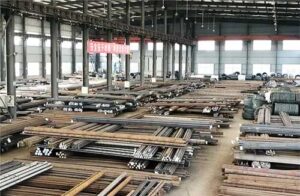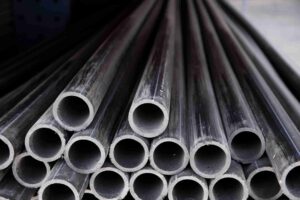Corrosion resistance is a critical aspect of materials used in various industrial applications, including hot work tool steel. While hot work tool steel is renowned for its exceptional heat resistance and wear properties, it can be susceptible to corrosion in certain environments. To address this challenge and extend the applicability of hot work tool steel, it’s essential to improve its corrosion resistance. In this comprehensive article, we will explore various techniques and methods employed to enhance the corrosion resistance of hot work tool steel, ensuring it maintains its structural integrity and longevity in corrosive conditions.
1. Introduction
Corrosion resistance is a crucial property for materials used in industries where exposure to corrosive agents is common. While hot work tool steel excels in heat resistance and wear resistance, addressing corrosion challenges is essential to ensure the material’s longevity and performance.
2. Understanding Hot Work Tool Steel
Composition and Properties
Hot work tool steel is formulated with alloying elements like chromium, tungsten, molybdenum, and vanadium. These elements provide heat resistance, toughness, and initial wear resistance. However, addressing corrosion resistance requires additional measures.
Heat Resistance vs. Corrosion Resistance
While hot work tool steel is designed primarily for heat resistance, its corrosion resistance may need to be enhanced to suit applications in corrosive environments.
3. Common Corrosion Types
Uniform Corrosion
Uniform corrosion is a general loss of material over the entire surface, leading to a gradual reduction in thickness.
Pitting Corrosion
Pitting corrosion is characterized by localized damage in the form of small pits or craters on the material’s surface.
Crevice Corrosion
Crevice corrosion occurs in narrow gaps or crevices where corrosive agents are trapped, leading to localized deterioration.
Intergranular Corrosion
Intergranular corrosion affects the grain boundaries of the material, compromising its structural integrity.
4. Enhancing Corrosion Resistance
Alloying Elements
Alloying elements like chromium, nickel, and copper can be added to hot work tool steel to improve its corrosion resistance without significantly affecting other essential properties.
Surface Treatments
Surface treatments such as passivation and pickling can remove surface contaminants and improve the corrosion resistance of hot work tool steel.
Protective Coatings
The application of protective coatings, such as electroplating or chemical vapor deposition, can provide an additional layer of protection against corrosion.
5. Applications and Industries
Die Casting
Die casting applications often involve exposure to molten metals and abrasive environments. Improving corrosion resistance in hot work tool steel molds is vital for maintaining dimensional accuracy and longevity.
Forging
Forging operations subject hot work tool steel to extreme conditions. Enhanced corrosion resistance ensures that forging dies maintain their performance and structural integrity.
Extrusion
Extrusion tooling operates in high-stress and high-temperature conditions. Corrosion-resistant hot work tool steel ensures dimensional stability and extended tool life.
Plastic Molding
In plastic molding, corrosion resistance is essential for preserving the precision and longevity of molds used in injection molding and other processes.
6. Challenges and Considerations
Balancing Corrosion Resistance and Other Properties
Enhancing corrosion resistance should not compromise other crucial properties like heat resistance and wear resistance. Achieving the right balance is essential.
Compatibility with Working Environments
The choice of corrosion-resistant hot work tool steel should align with the specific corrosive agents and conditions present in the working environment.
7. FAQs
Frequently Asked Questions About Improving Corrosion Resistance in Hot Work Tool Steel
Q1. Can hot work tool steel be inherently corrosion-resistant without additional treatments?
Hot work tool steel possesses some level of corrosion resistance due to its alloy composition. However, in highly corrosive environments, additional treatments or alloying may be necessary to enhance corrosion resistance.
Q2. Are there industry standards or guidelines for improving corrosion resistance in hot work tool steel?
Industry-specific standards and guidelines may exist, depending on the application and sector. It is essential to consult relevant standards and work with experts in the field to determine the most appropriate corrosion-resistant solutions.
Q3. How does the addition of alloying elements like chromium impact the mechanical properties of hot work tool steel?
The addition of alloying elements like chromium to hot work tool steel can improve corrosion resistance without significantly affecting mechanical properties such as heat resistance and wear resistance. However, the precise impact may vary depending on the specific alloy composition and heat treatment.

